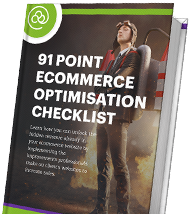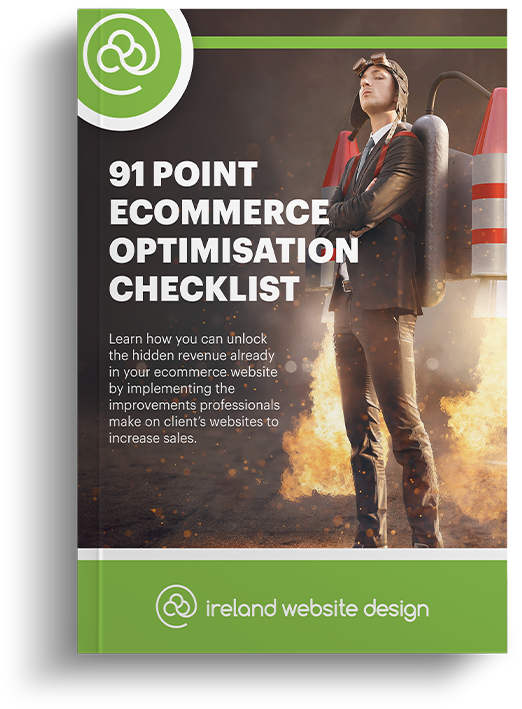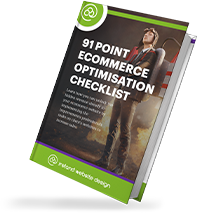Selling online has never been better (or more accessible), but to be part of this booming industry you need to be up to date with the latest and greatest technology.
It’s important to be on top of the newest trends, especially when it comes to building an eCommerce store.
Over the last ten years, we’ve heard the same question from many retailers: what eCommerce platform is the best for selling online? There are a lot of options to choose from and each one has different features, benefits, and limitations. Making the wrong choice when it comes to choosing a platform can cost your company dearly and a store that doesn’t work well can ruin both your business and your reputation in the industry.
This is why it’s so important that you choose the right eCommerce platform from the beginning. Let’s start with four things you’ll need to consider before selecting which eCommerce platform is the best for your company.
Your Team Needs To Be Able to Handle It
Before choosing a platform for your eCommerce store, take a moment to think about who’ll be using it every day and what their experience level is like.
- Do they have good technical skills?
- Do they know how to use the existing UI (user interface)?
- Will there be any modifications needed to the platform over time and can they do it?
- Is there a 24/7 support system in case your team encounters a problem?
- Is there analytical support provided?
- Can your platform analyze transactions, purchase histories, user behavior, etc.?
- Is it easy to add new stock, roll out promotions and fulfill orders?
Integrations And Plugins
The platform you choose for your eCommerce store isn’t enough to successfully run an online store. You need to be able to use third-party software or plugins to help you perform a variety of tasks.
For example, you’ll need:
- Plugins for your accounting so your team will be able to manage sales, revenues, and profits.
- Plugins for email marketing so you can connect with your customers.
- Shipping tools so you and your team will be able to handle any orders or returns.
You’ll also need to integrate the existing business systems for your company into your online store.
For example, the inventory management software used at your physical store will need to be integrated into your online platform as well.
It Should Address Your Specific Shipping Needs
The eCommerce platform you choose must support your individual shipping requirements, which include the integration of Warehouse Management Software (WMS) and real-time communication.
The chances are that you’ll probably hire a carrier to handle delivery and returns so make sure the platform you decide to go with is compatible with your carrier’s inventory management software. It should also be able to support an automated email system so customers, carriers, and your staff can be notified when a sale or return occurs.
Your chosen platform should support:
- Automated order confirmation
- Order tracking
- Feedback or complaint emails
- Return or replacement emails to and from your clients
You might need to add new locations or add new features to the system over time so make sure your platform of choice is flexible enough to allow these changes.
Scalability
Your eCommerce store will need to be able to support the growth of your business. Having a sluggish platform full of errors and faults will kill your business so having a platform that is able to handle new features, plugins, and increased traffic without fail is ideal. This is why it’s important to check the scalability of an eCommerce platform before committing to one.
Always think of the future when choosing a platform. It doesn’t just have to be a good fit for your business today but also in years to come. You don’t want to have to fork out money for features you won’t use – so make sure the platform you decide to go with can grow alongside your business.
What’s The Best eCommerce Platform?
Now that we know what factors to take into consideration before deciding on our eCommerce platform let’s take a look at your options and what the benefits are for each.
WooCommerce
Benefits
- Complete control over customizations as it’s an open-source platform.
- The core software is free.
- Features a secure shopping cart.
- Access to thousands of different plugins, themes, tools, and features.
- Strong SEO (search engine optimization) capabilities.
- There are no limits on the number of products and categories you can have.
Drawbacks
- Not a complete eCommerce content management system simply a WordPress plugin. You can’t use it for any other type of website.
- The costs for third-party plugins and features can quickly add up depending on your store’s individual needs.
- Hosting and security are the responsibility of your business and your team.
- Can be hard to implement multi-currency.
- Lacks scalability and won’t work for fast-growing companies.
Magento
Benefits
- Complete control over customizations as it’s an open-source platform.
- The large marketplace offers a lot of tools, features, plugins, widgets, themes, and modules that you can buy or get for free.
- If your business is available globally you can create different versions of your website in different languages.
- The core code is always updated which allows for easy customization.
Drawbacks
- Security, updates, etc. are down to the owner of the website as it is an open-source platform.
- The basic version is free but you will need to spend around €20,000/year for the hosted version.
- Customisation takes a long time and you’ll need professional developers due to the complicated code.
- Can be incredibly difficult to use for people not used to web development.
Shopify
Benefits
- Easy set-up and use.
- Has a built-in cart abandonment recovery feature that allows you to track incomplete sales quickly.
- It offers mobile-optimized themes that you can buy or get for free. It also has a large marketplace for apps.
- Syncs with social media platforms like Facebook and Instagram easily.
- It contains a user-friendly inventory management system.
- It supports a lot of different third-party payment gateways.
Drawbacks
- Costs can quickly add up. You have to pay for a lot of apps, plugins, tools, and themes. Some of these features cost a one-time fee or a monthly payment.
- It charges transaction fees on a lot of third-party payment gateways.
- Making DIY code changes is challenging.
You can see from our list that there is no perfect match with every platform which is why choosing an eCommerce platform specifically for your business is an important process. It comes down to what your requirements are, how your future is looking, the integrations you want to make, and what your technical knowledge is.
If you need help choosing the right eCommerce platform for your online store then get in contact with our team and we can help you decide on the perfect platform for your individual needs.




